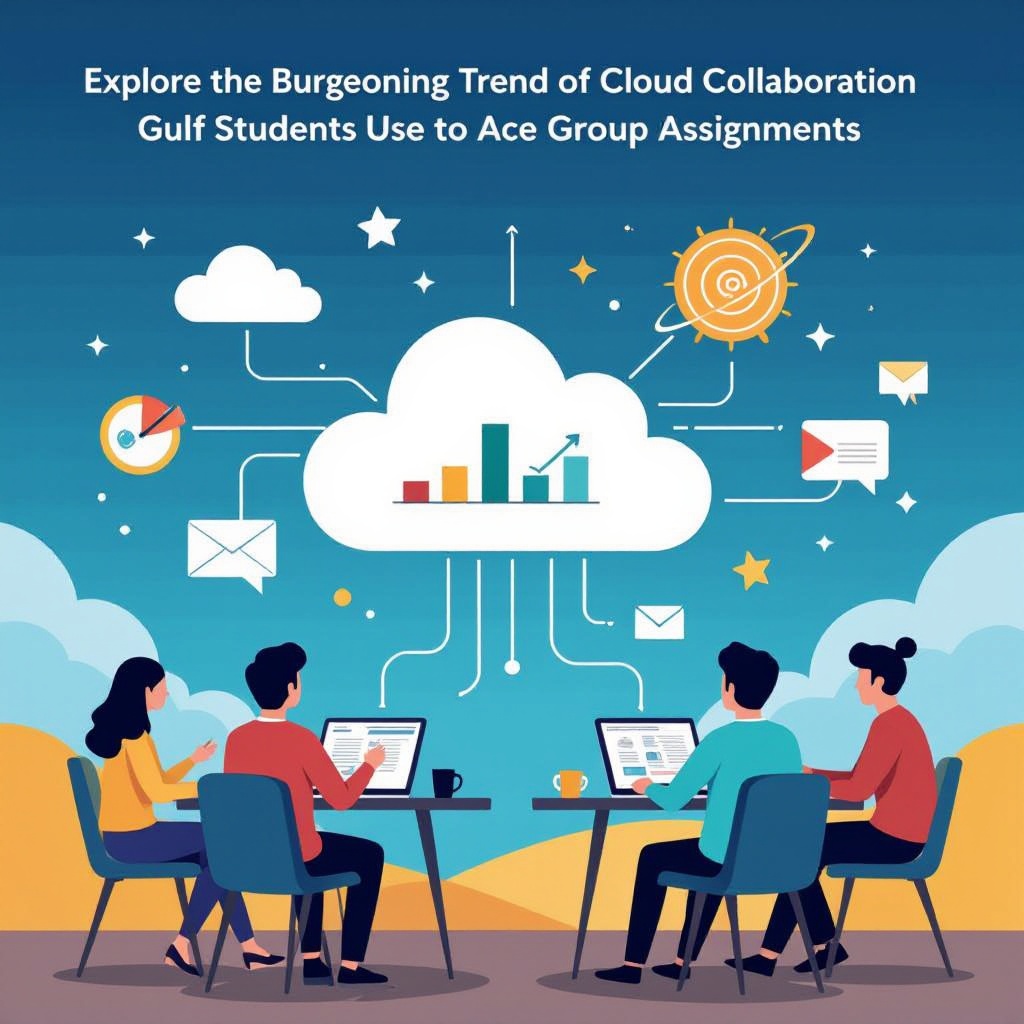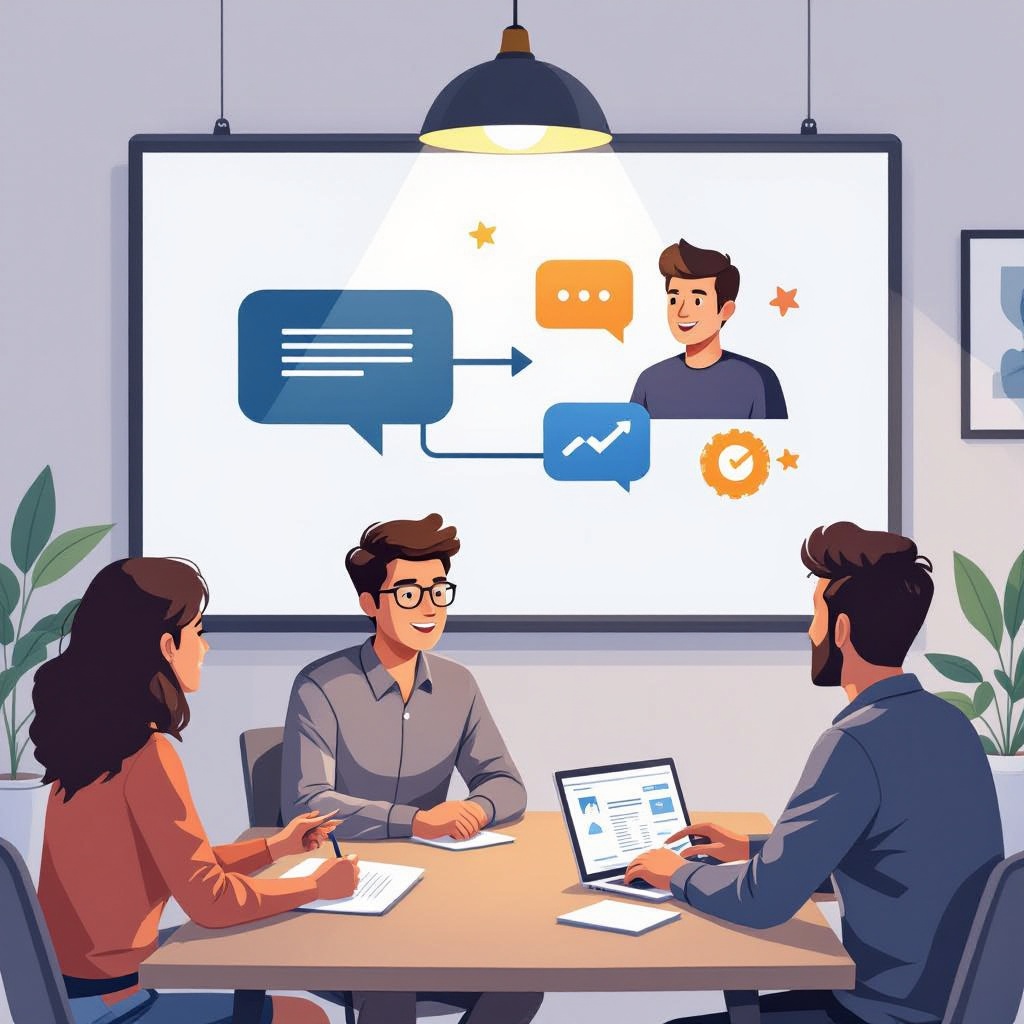Gulf students are mastering group assignments through cloud collaboration, revolutionizing education across the region. By using tools like Google Workspace and Microsoft Teams, they enjoy a simpler, more efficient digital collaboration, free from geographic or device limitations.
Key Takeaways
- Gulf students increasingly use cloud collaboration tools, leading to a 25% enrollment surge in virtual and blended learning models.
- Tools like Google Workspace and Microsoft Teams allow for smooth group work by offering easy file access and real-time editing across different locations.
- Video conferencing platforms such as Zoom make virtual face-to-face meetings possible, boosting collaboration without the need to travel.
- These tools’ cross-platform functionality keeps students productive, whether they’re using a mobile device or desktop.
- Language accessibility features on platforms like Google Meet and Microsoft Teams foster inclusivity, helping overcome language barriers in multicultural classrooms.
Explore the Burgeoning Trend of Cloud Collaboration Among Gulf Students
You’ve probably noticed how Gulf students are embracing online teamwork. In UAE, the surge in remote and flexible education models is quite evident. The enrollment in virtual and blended learning has jumped by 25%, and that’s no small feat. More students are now relying on cloud collaboration tools for digital group projects.
Cloud collaboration in UAE isn’t just a trend; it’s fast becoming a staple for students. These tools make it easier to work on group assignments without being physically present. Students are tapping into platforms like Google Workspace and Microsoft Teams, which offer seamless access to documents and presentations anytime, anywhere. This shift ensures that students, regardless of location, can effectively contribute to assignments. If you’re looking to learn more about the growth of digital education in the UAE, you might find this page from GCC Statistical Centre enlightening.

Stay Connected: Always-On Access for Distributed Teams
In the sprawling Gulf region, students often spread out geographically. Yet, staying in sync for group assignments is crucial. Thankfully, tools like Google Workspace, Microsoft Teams, and Zoom are real game-changers. These platforms ensure seamless collaboration regardless of the distance.
First off, cloud access is indispensable. It allows students to upload, share, and access files anytime. So, whether you’re at the library or chilling at a café, your documents are just a click away.
Real-time editing in platforms like Google Workspace allows multiple users to work on a single document simultaneously. This means no bottlenecks and continuous progress on assignments. For example, while one student refines the introduction, another can polish up the conclusion. With Microsoft Teams, students enjoy integrated chat and collaborative tools, making communication fluid. Want to ask a question? Just type away and get immediate responses.
Video conferencing with Zoom also plays a pivotal role. It facilitates face-to-face interactions without the hassle of traveling. Students can hold productive meetings, share screens, and discuss ideas as if they’re in the same room. This ease of collaboration has undeniably boosted educational experiences in the GCC.
To see how these technologies are setting trends, visit Educause, a brilliant resource for educational tech insights. These platforms are indeed reshaping how students in the Gulf region tackle their group assignments.

Mastering Projects with Real-Time Editing and Transparent Tracking
Nothing beats the convenience of real-time updates and document versioning in a digital workspace. These features simplify group assignments by minimizing file confusion and streamlining workflow. With tools like Google Docs or Microsoft OneDrive, students can edit documents simultaneously, making it easier to stay on the same page.
Participation tracking adds another layer of benefit by boosting student engagement. Each member’s input is visible, allowing for a fair assessment of contributions. This transparency can foster a sense of ownership and responsibility among students. It’s a win-win for both students and educators who want a clear picture of involvement.
For those interested in diving deeper into the benefits of collaboration and transparency, websites like TechTarget offer more information.
Effortless Communication and Direct Feedback Channels
Effective communication is crucial for Gulf students tackling group assignments. Integrated tools like Microsoft Teams and Zoom revolutionize this process. Both platforms offer a spectrum of features that foster instant feedback, vital for maintaining momentum in group tasks.
With group chat options, team members can discuss ideas, share updates, and clarify tasks without the need for constant email exchanges. It’s much easier to brainstorm when everyone can promptly contribute. This immediacy allows for real-time collaboration, making adjustments as new insights appear.
Zoom and Microsoft Teams also shine in their video meetings capabilities. Face-to-face discussions streamline brainstorming sessions, enhancing the flow of ideas. Plus, seeing peers’ expressions adds a layer of understanding and connection that’s often missed in text. These platforms support persistent discussions, so you can always revisit past chats or conversations, ensuring nothing slips through the cracks.
Both Teams and Zoom facilitate direct file sharing, which is essential when collaborating on documents or projects. By sharing screens, students can present their work to peers for review, receiving feedback and guidance without delay. This seamless exchange ensures everyone is on the same page, significantly boosting project quality.
Such collaboration tools aren’t just about communication; they’re engines of productivity and mentoring. Students can share insights and mentor each other in real-time, enhancing the learning experience. This blend of chat, comments, and video features truly elevates how students work together, offering a structured yet flexible environment for group success. For more insights on these platforms, check out Microsoft’s official website or Zoom’s resources.

Adapting to Mobile-First Environments with Cross-Platform Tools
In the Gulf Cooperation Council (GCC), students increasingly favor their smartphones, tablets, and laptops to access cloud-based content, making cross-platform and device flexibility vital. By embracing mobile collaboration, they’re ensuring learning doesn’t have to be tethered to a single device. This flexibility enhances productivity as they can switch between devices without losing access to their projects or notes.
Device-agnostic solutions are crucial for promoting inclusivity and accessibility. They align perfectly with a Bring Your Own Device (BYOD) policy, allowing students to use the gadgets they’re most comfortable with. This versatility means everyone can participate, regardless of their device preference or operating system. Whether you’re using an Android phone, an iPad, or a Windows laptop, these platforms keep everyone connected and on track.
Using tools like Google Workspace or Microsoft Teams capitalizes on this cross-platform capability. They’re designed to function seamlessly whether you’re on a mobile device or a desktop, ensuring you remain productive, even on the go. Plus, data stays synchronized, so all collaborators have access to the latest information Google Workspace and Microsoft Teams.
Embracing these device-agnostic platforms isn’t just about convenience; it’s about making education accessible to all students. With such tools, Gulf students are empowered to ace their group assignments from anywhere, using any device.
Breaking Language Barriers in Multicultural Classrooms
Embracing multilingual collaboration in classrooms can really transform group assignments. Tools with translation features and language accessibility are essential for promoting inclusivity in classrooms across the Gulf Cooperation Council (GCC). These ensure that non-native English or Arabic speakers participate without the usual setbacks. Many students find these features immensely helpful.
For example, platforms like Google Meet and Microsoft Teams offer real-time captioning and translation, making conversations smoother. This enhances group dynamics, giving every student a voice and boosting project success. Language support boosts confidence among team members and creates a more inclusive environment. When everyone understands each other, productivity increases, and the assignment quality improves.
By leveraging these tools, multicultural classrooms can truly thrive. Consider exploring Microsoft’s language features or Google’s translation capabilities. These promote a more connected and inclusive educational experience.
Frequently Asked Questions
🌐 Why are Gulf students increasingly using cloud collaboration tools?
Cloud collaboration tools have become essential for Gulf students due to the rise of remote and blended learning in the UAE and across the GCC. These platforms offer flexible, always-on access, making it easier to work on group projects without needing to be physically together.
📱 How does mobile access enhance student collaboration in the GCC?
With a growing preference for smartphones and tablets, Gulf students benefit from cross-platform tools like Google Workspace and Microsoft Teams. These platforms ensure seamless switching between devices, promoting flexible learning and increased productivity anytime, anywhere.
📝 What are the benefits of real-time editing for student projects?
Real-time editing allows multiple students to simultaneously update documents, reducing version confusion and speeding up project completion. This collaboration method keeps everyone on the same page and improves overall workflow management.
💬 How do tools like Microsoft Teams improve communication for group work?
Platforms like Microsoft Teams enhance student communication with integrated chat, video conferencing, and file sharing. These features streamline collaboration, help clarify tasks, and enable instant feedback, boosting both engagement and efficiency.
🌍 How do collaboration tools support GCC’s multicultural classrooms?
With built-in translation and captioning, tools like Google Meet and Microsoft Teams make multilingual collaboration easier. This fosters inclusivity, allowing students of various linguistic backgrounds to effectively contribute to group assignments.
🔒 Can contributions be tracked in cloud collaboration platforms?
Yes, features like participation tracking enable transparent project management by logging individual student inputs. This visibility promotes fairness and accountability while also helping teachers evaluate engagement levels.
